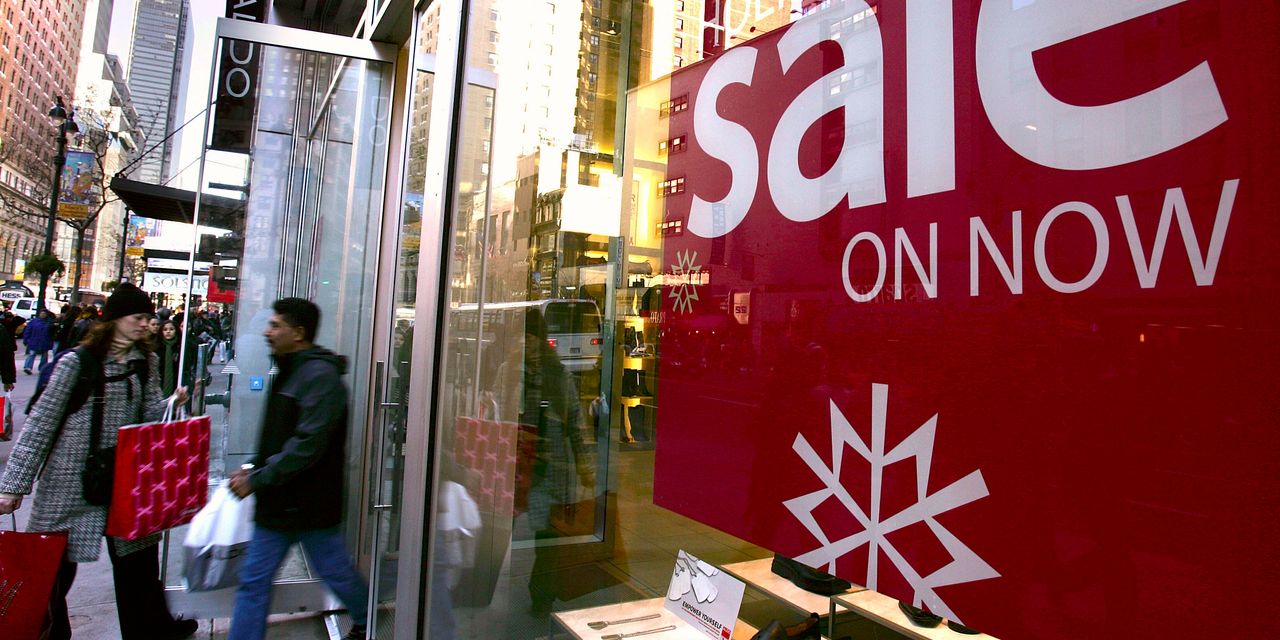Even as inflation stretches consumers’ budgets, retailers are set to break sales records yet again this holiday season — in part due to inflationary price increases — even as they hire far fewer workers, an industry trade group forecast on Thursday.
The National Retail Federation said it expected holiday-season sales — defined as in-store and online sales from the beginning of November through December — to increase between 6% and 8% over last year, to between $942.6 billion and $960.4 billion. That would follow the $889.3 billion booked for the same period last year, a figure that smashed prior records, the group said. But the 6% to 8% growth expectation is slower than the 13.5% gain retailers notched in 2021 over 2020.
The NRF said it expected online and other nonstore sales to climb between 10% and 12% to between $262.8 billion and $267.6 billion.
The forecast comes as retailers cut prices to spur holiday demand and purge nonseasonal goods from their warehouses after pandemic-related restrictions rippled through the world’s supply chains and customers changed their spending habits to cover rising prices for basics. But some analysts have said that even with an abundance of markdowns, holiday prices overall could still be higher than in previous seasons. And shares of online retail giant Amazon.com Inc.
AMZN,
dropped last week on a weaker-than-expected forecast for the fourth quarter, which includes the peak holiday season.
But even as higher prices this year overtake last year’s wave of demand, the trade group said customers were still ready to shop, both online and in stores. And, they said, physical stores were likely to play a bigger role in holiday shopping this year, as prepandemic habits return.
Don’t miss: The holiday-shopping season has a different problem this year than last — and it could lead to some deals
“While consumers are feeling the pressure of inflation and higher prices, and while there is continued stratification with consumer spending and behavior among households at different income levels, consumers remain resilient and continue to engage in commerce,” NRF President and Chief Executive Matthew Shay said in a statement.
He added that many shoppers will likely boost their spending by using savings and credit as they deal with higher heating, gasoline and grocery prices. During a call with reporters, he said that while wealthier shoppers were feeling more enthusiastic about shopping, lower-income customers were feeling more anxious.
“There’s a lot of substitution going on in terms of customer behavior,” Jack Kleinhenz, chief economist at the NRF, said during the call. “That is, they’re looking for value.”
The group also said it expected retailers to hire between 450,000 and 600,000 seasonal workers this year, which would be far lower than the roughly 670,000 brought on last holiday season but would track with individual retailers’ announcements. While Amazon and Target Corp.
TGT,
have announced they will look to hire the same number of workers as last year, other large retailers such as Walmart Inc.
WMT,
Macy’s Inc.
M,
and Dick’s Sporting Goods Inc.
DKS,
say they will hire fewer workers this holiday season than last.
Retailers have pulled back on holiday-season hiring for a number of reasons. Some have made earlier hires permanent or began hiring earlier this year to meet demand for a season that now gets going in September and October. Other analysts point to broader difficulties in hiring as well as caution over the economy.
See also: 4 ways U.S. shoppers plan to cheat inflation this holiday season — and you can too
Some retail workers have described navigating storage spaces crowded with boxes amid the glut of inventory, making it more difficult to hit targets for handling online orders. Negotiations between dockworkers and rail workers and their employers also loom over the coming holiday season, with strikes or any other tensions potentially further squeezing supply chains and driving up prices.
Kleinhenz said the retail industry was still seeing sales-volume growth. Some analysts, however, have said that those volumes, a measure of actual items sold, have declined in recent months, and that retailers have leaned more into higher prices to drive sales totals.
“Certainly, a portion of our increase is going to come from higher prices, but not the strangling prices that are occurring in motor vehicles, gasoline and energy as we go forward this holiday season,” Kleinhenz said during the call.
Read more: The supply chain outlook for holiday shopping — what’s in stock, and what’s not
